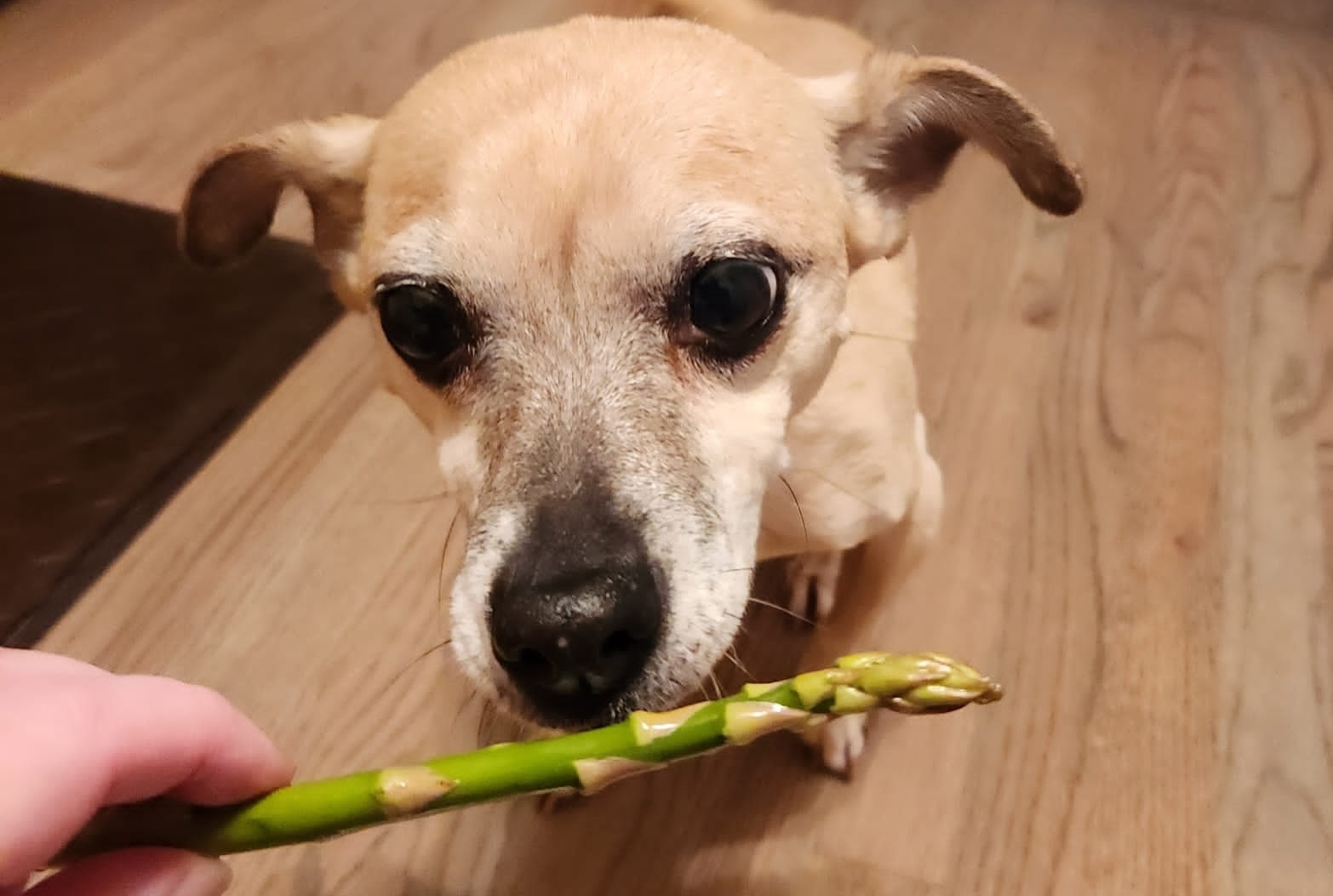Beyond the Bowl: Creative Ways to Add Greens to Your Dog’s Diet
Adding veggies to your dog’s diet can be a challenge, especially if your pet is a picky eater. But the benefits of greens are undeniable and it’s worth trying to incorporate them into their meals, even if it’s just occasionally. Here are some tips and tricks to encourage your dog to eat their greens:
Tips:
- Ease into greens. Green veggies aren’t for every dog, so start with small amounts and wait 24-48 hours to see how they react before increasing the amount.
- Start with small pieces. Don’t jump into offering your dog a bowl of fresh spinach greens or a heaping scoop of broccoli. Instead, make sure you’re offering a small amount of the new veggie according to your dog’s size. Sometimes it helps to finely chop the new food and mix it in with their bowl of food.
- Experiment with different greens. Just because your dog isn’t a fan of spinach, doesn’t mean he won’t fall in love with steamed broccoli. There are so many options, so don’t be discouraged if it takes a few tries to find your dog’s favorite veggies and how he likes them prepared.
Tricks:
- Make a Green Smoothie – This is far and away my favorite trick for getting dogs to enjoy their veggies because of its success rate, versatility, and easier digestion. Plus dogs love it!
- Throw your veggie(s) of choice into the blender. If Fido is new to the greens thing, start with options that are mild in flavor, like romaine lettuce or baby spinach. This is a great way to incorporate multiple veggies at a time, too.
- Optional: Add some super tasty, high value treats like freeze-dried beef liver or chicken breast. You can also use freeze-dried meal nuggets or sliders for this.
- Pour in your dog’s favorite hydrator, like goat kefir, goat milk, or bone broth. For a thicker smoothie, add plain Greek yogurt or some banana if your dog prefers.
- Blend to tasty green perfection!
You can use this smoothie as a customized meal topper, a lick mat spread, a Kong or Toppl filler, or pour into an ice cube tray and freeze for later!
- Be a little fancy. The manner in which you prepare your dog’s veggies can influence not only the palatability but also digestibility. Some dogs prefer their veggies cooked – and that’s OK! In some cases, gently cooking can actually offer more health benefits because not all vegetables have nutrients that are readily bioavailable for a dog’s digestive system.Some cooking methods are better for preserving nutritional value, though. For example, lightly steaming broccoli helps to essentially pre-digest the material so it’s easier for Fido’s gut to metabolize and derive nutrients from the plant.Mashing or finely chopping gently cooked veggies is one of the better ways to offer produce overall. The increased surface area and smaller size can make digestion and metabolism easier so our pup gets the most benefits possible.
- Add some ‘seasoning’. Avoid salt, pepper and other seasonings since they are unsafe for pets. If your pooch goes crazy for freeze-dried toppers like these, crumble them up and sprinkle it on top of those veggies! (Your food processor can also help you out for large batches!) If you’re looking for a pre-made topper with some added nutritional benefits, try Northwest Naturals Functional Toppers, or for fresher breath try Dentatreat as a topper.
Of course, if you’re not the cooking type, there are plenty of commercially prepared options to incorporate greens to your dog’s diet. A convenient pre-blended mix of greens and bone broth from Green Juju is a crowd favorite for palatability and gut health. Just thaw and scoop over top of your dog’s meal. Their new freeze-dried Just Greens is a super convenient shelf-stable version, too.
If you’re unsure where to start with incorporating greens into your dog’s diet, our experienced team members are always here to help. Come see us and we’ll happily walk you through your options.
*This article is for informational purposes only. It is not meant to provide medical advice or replace the advice of a qualified veterinarian.





 Recent FDA Pet Food Recalls & Warning Letters. Images captured from FDA website. Date accessed: 15Mar2023.
Recent FDA Pet Food Recalls & Warning Letters. Images captured from FDA website. Date accessed: 15Mar2023.